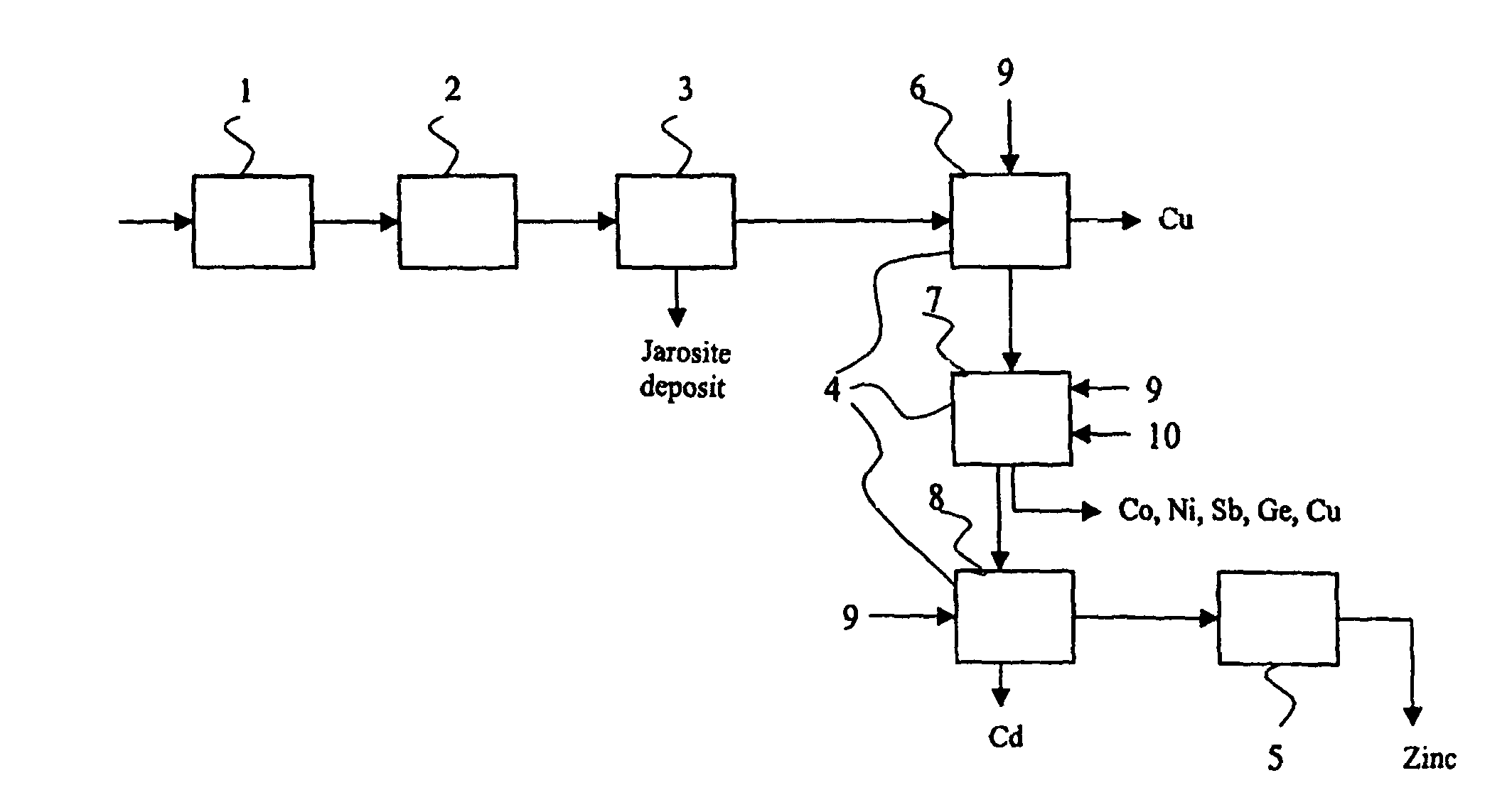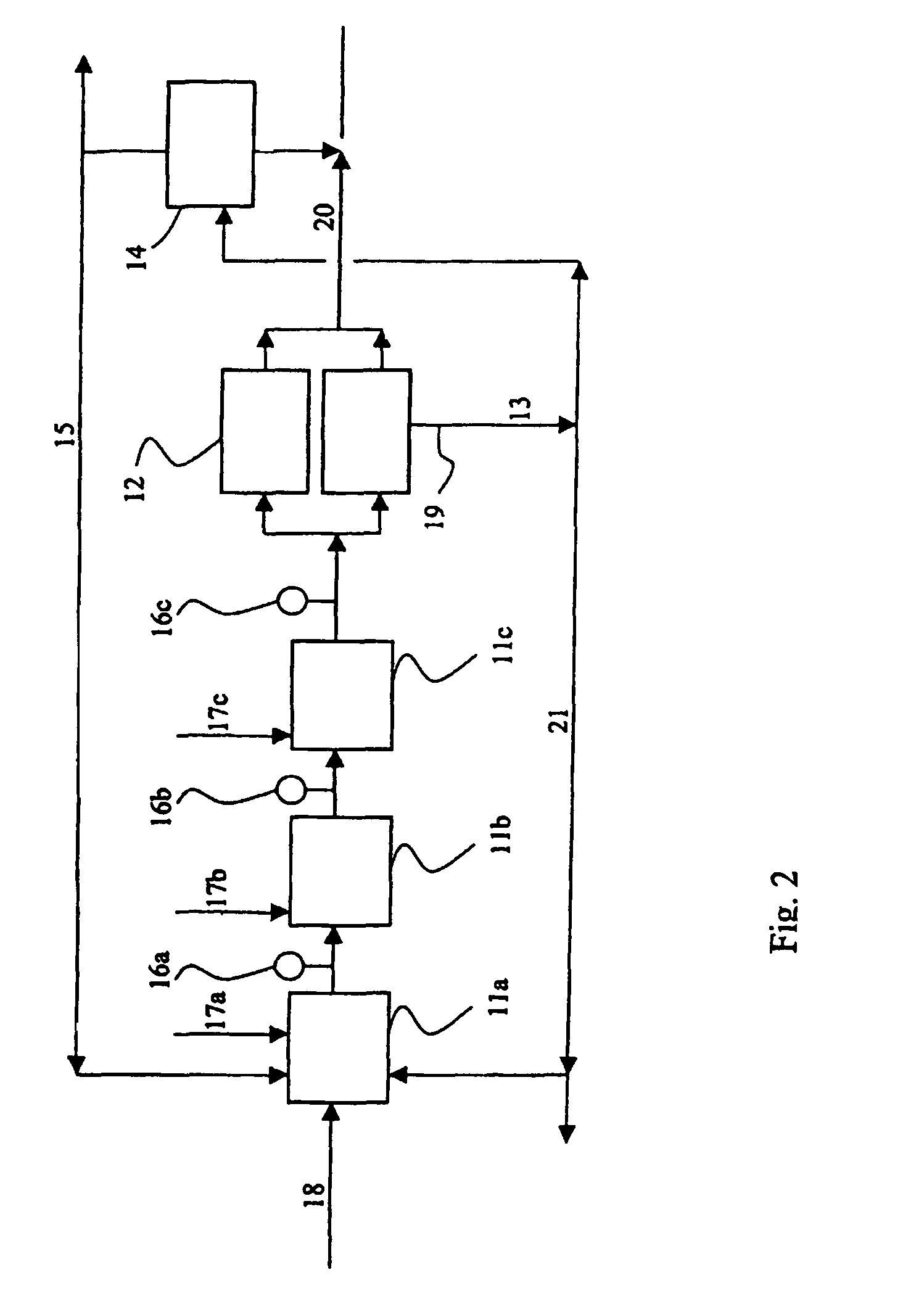Method and apparatus for controlling metal separation
a technology of metal separation and control apparatus, which is applied in the direction of furnace types, furnaces, manufacturing converters, etc., can solve the problems of reducing the efficiency of electric current, increasing the error of measurement results, and adjusting so as to enhance and optimise the removal of metal and optimise the consumption of zinc powder
- Summary
- Abstract
- Description
- Claims
- Application Information
AI Technical Summary
Benefits of technology
Problems solved by technology
Method used
Image
Examples
example 1
[0042]In this test, a continuous cobalt removal process was examined. In the test performed under process conditions, zinc powder was introduced by means of a screw feeder into five metal removal reactors arranged in parallel. Arranged after each reactor, or in the connecting pipe between them were the measurement electrodes of the redox potential, which were used to measure the redox potential of the sludge coming out of the reactor for each reactor specifically. The measurement results controlled the introduction of zinc powder into the reactors for each reactor specifically. The measurement electrodes were washed at intervals of an hour to prevent their fouling.
[0043]The acidity and basicity of the reactor solutions were measured by means of the BT value using a titration method known per se. The BT value ranged between 2.5-3.5.
[0044]In the process, a consumption of zinc powder of about 0.6-0.7 g was achieved.
[0045]However, a high BT caused, soon after the starting of the process...
example 2
[0046]In this test, a continuous cobalt removal was examined under conditions similar to those of Example 1, but the BT value was about 2.
[0047]In the test, an uninterrupted run of more than 6 months was achieved, and furthermore as a result of the process, a better and more uniform zinc-bearing solution. The concentrations of cobalt, nickel and copper measured from the zinc solution were principally less than 0.2 g / l, and those of germanium, antimony and arsenic less than 0.02 mg / l.
[0048]Based on the process tests, it was observed that the method and apparatus in accordance with the invention enabled one to achieve a small consumption of zinc powder in conjunction with metal removal reactors compared with other zinc preparation processes. It was possible to precipitate copper and cadmium in the solution purification, i.e. metal removal, practically using a stoichiometric amount of zinc powder. To sufficiently precipitate cobalt and nickel, a slight excess of zinc powder was needed,...
PUM
| Property | Measurement | Unit |
|---|---|---|
| concentrations | aaaaa | aaaaa |
| concentrations | aaaaa | aaaaa |
| acidity | aaaaa | aaaaa |
Abstract
Description
Claims
Application Information
 Login to View More
Login to View More - R&D
- Intellectual Property
- Life Sciences
- Materials
- Tech Scout
- Unparalleled Data Quality
- Higher Quality Content
- 60% Fewer Hallucinations
Browse by: Latest US Patents, China's latest patents, Technical Efficacy Thesaurus, Application Domain, Technology Topic, Popular Technical Reports.
© 2025 PatSnap. All rights reserved.Legal|Privacy policy|Modern Slavery Act Transparency Statement|Sitemap|About US| Contact US: help@patsnap.com



